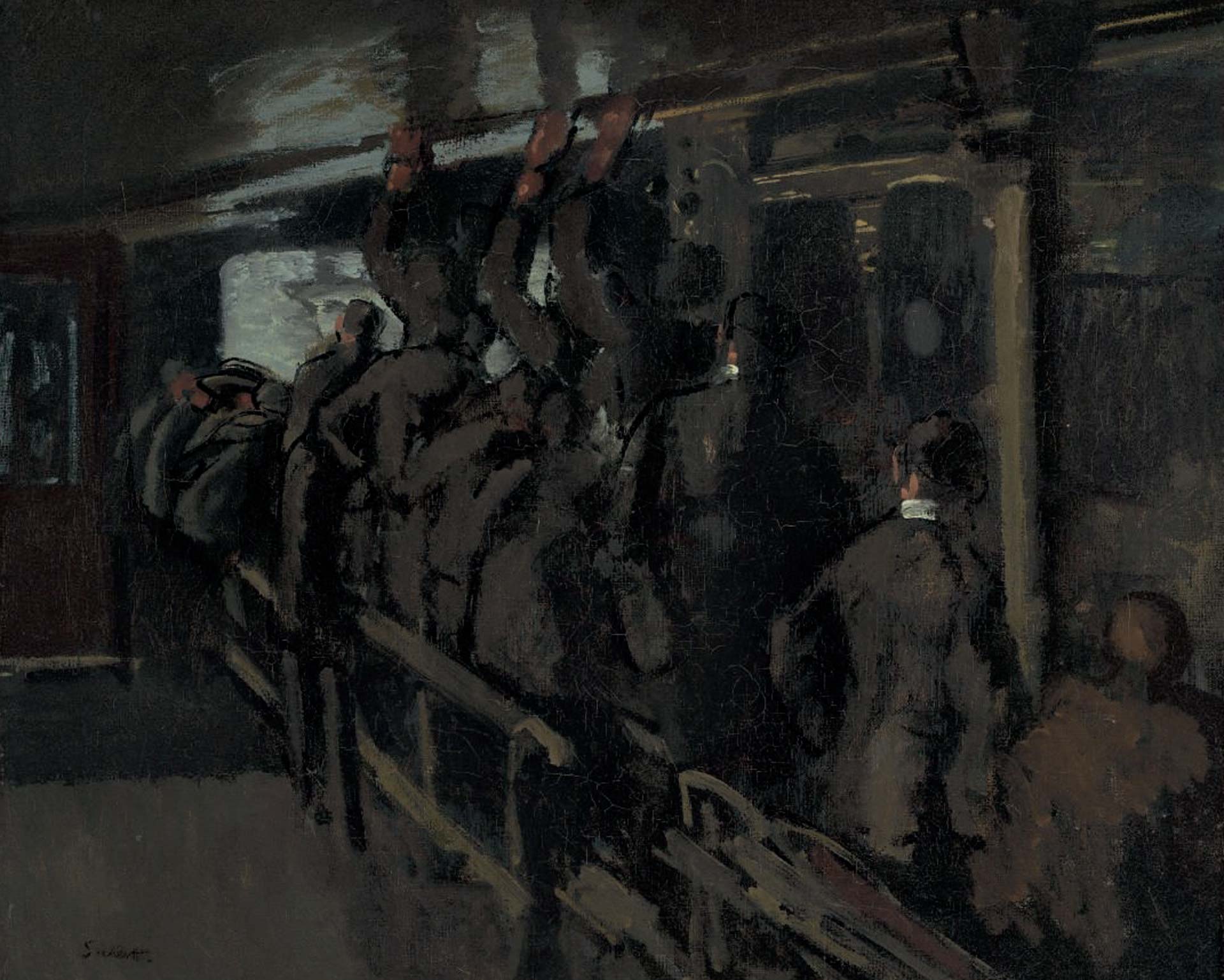Christie’s will auction “The Gallery at the Old Mogul” on June 20th in London. The painting, by Walter Sickert, is one of the earliest paintings in the world of a theatrical projection in a movie theater. (The Old Mogul was not one of FDTimes’ oldest sponsors. It was a movie theater.) I have seen this painting in the home of the prominent film industry collector whose name I am not allowed to name.
Rachel Hidderly discusses “The Gallery at the Old Mogul.”
Summary from Christie’s catalog
“The Gallery at the Old Mogul” by WALTER RICHARD SICKERT, A.R.A. (1860-1942)
signed ‘Sickert’ (lower left)
oil on canvas
25 x 30 in. (63.5 x 67 cm.)
Painted in 1906.
£80,000-120,000 $120,000-170,000
€110,000-150,000
PROPERTY FROM A PROMINENT FILM INDUSTRY COLLECTION
Lot 40, page 150 of catalog
Walter Sickert’s The Gallery at the Old Mogul is thought to be one of the earliest paintings in the world of a cinematic performance. Early press descriptions prove that the original title of the picture was Cinematograph and shows a film screening of a Western.
Before the existence of purpose built cinemas, films were often shown in music halls as part of the evening’s entertainment. ‘The Old Mogul’ was the original name for the Middlesex Music Hall in Drury Lane, remodeled and renamed in the 1870s, and variously known as ‘the Mogul Tavern’, ‘the Old Mo’, and ‘the Old Middlesex’. The present work was painted soon after Sickert’s return to London in 1906, at a time when Sickert was rediscovering his fascination for music-hall subjects. ‘I have started many beautiful music-hall pictures. I go to the Mogul Tavern every night,’Sickert wrote to Jacques-Émile Blanche in 1906. Related works of the same subject include Noctes Ambrosianae painted in the same year and four related drawings in the Walker Art Gallery Liverpool and Aberdeen Art Gallery. Sickert’s renewed interest in music halls further inspired him over the autumn of 1906 to paint and draw works in Paris at ‘L’Eldorado’, and ‘The Theatre de Montmartre’. Like The Gallery at the Old Mogul which places the audience on a diagonal recession, these works depart from earlier music hall works in their experimentation with our viewpoint of the audience.
Sickert’s inspiration for depicting new forms of entertainment such as cinema performances stemmed partly from French artists, including Degas’ depictions of Parisian Café Concerts and theatres. Sickert, however, was one of the first artists to examine scenes of popular entertainment in a British art context. Unlike Degas, the focus is less on the performance – or in this case screening – and more on the relationship of the audience to the show. This method was developed in Sickert’s earliest entertainment works such as the Old Bedford Gallery pictures of the 1890s, which like the present work choose to focus on the audience from behind, inviting the viewer to feel at once a part of the spectacle and yet distant from the subjects. This tool was partly borrowed by Sickert from French Impressionist works such as Manet’s Un bar aux Folies Bergère, where the viewer is made to feel like they are ordering a drink at a bar but is unable to witness the full transaction. Sickert’s ability to create this ambiguity allows the onlooker to invent narratives for the scene, and is one of the reasons he remarked to Virginia Woolf, ‘I have always been a literary painter’ (V. Woolf, Walter Sickert: A Conversation, London, 1934, p. 26). While Sickert’s work may not have the sentiment or caricature of Charles Dickens’ (as loosely suggested by Woolf in 1934), it often manages to give the impression that you are viewing a moment in time, a snapshot that leaves one guessing as to what has just happened or what will happen next.
It is of no surprise therefore, that in later years Sickert began increasingly to adapt compositions directly from photographs. Yet unlike a photograph, The Gallery at the Old Mogul seems full of movement. Sickert maintains the ability not to simply depict but to create dramatic atmosphere through low tones and a liquid handling of paint reminiscent of Whistler and indeed of a cinematic performance. The Gallery at the Old Mogul successfully predicted not only the importance of film on everyday cultural life but on many subsequent art movements such as the Cubist works of Braque and Picasso between 1907-14.
The Gallery at the Old Mogul was previously owned by the actor Sir Michael Redgrave and sold to the distinguished collector Sir Anthony Lousada and his wife Patricia McBride, dancer with Balanchine’s New York City Ballet.
Christie’s Auction details
London, King Street – 20 June 2016
Jun 20, 6:00pm, Lots 1-49
Viewing Times
103 Bond Street, London W1S 1ST
King Street









